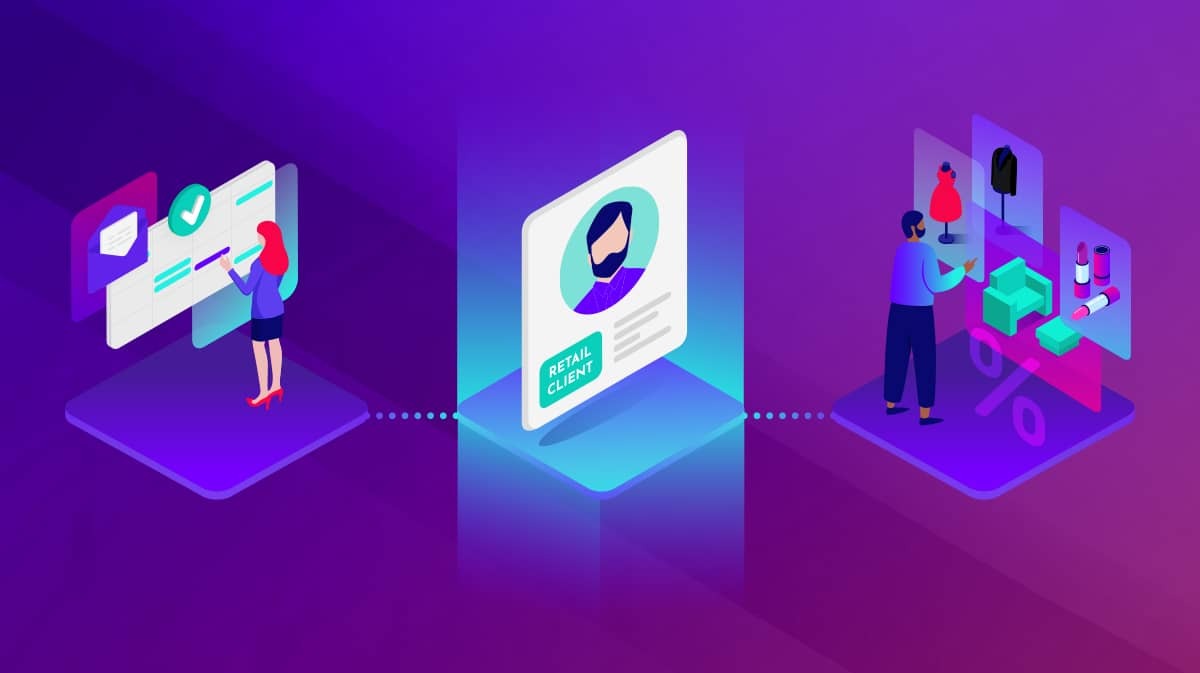The entrance of COVID-19 onto the world stage has resulted in many firsts. For most customers, March 2020 marked the first time they wore a mask in public, the first time a store associate spritzed hand sanitizer into their palms, and the first time they had to stand in line to gain entry to their bank. It meant challenges for the mall, a disruption to store footfall and a challenge for customer service.
Capacity management is another first we all can share. For the first time, businesses needed to think about footfall management and occupancy with an eye toward managing traffic rather than encouraging large numbers. Tight limits were in place, whether you operate retail stores, bank branches, or any other spaces where visitors congregate to conduct business, their safety was your priority.
How COVID-19 is changing the landscape
Until 2020, managing footfall and crowds was primarily a response to guidance around fire safety. In the past, the more customers you had inside your stores at any given time, the better; it implied that you had the right products or services and conveyed an air of demand. More bodies simply meant there was an opportunity for higher revenue. When COVID-19 hit, the experience of visiting physical locations changed drastically for businesses and customers alike - literally overnight, a full store or branch was cause for fear.
Changes for businesses
Now that we're all facing the aftermath of the pandemic, our new normal dictates a need for social distancing. This means creating spaces where customers have the autonomy to manage their own distance, and respect that of others.
In our COVID-19 world, businesses need to rethink capacity as it relates to social distancing guidelines and find ways to measure how many occupants are in their stores in real time. With this data, businesses can manage perception and customer experience.
Changes to customer experience
Before COVID-19 created the need for social distancing, customers were able to come and go as they pleased and retailers depended on foot traffic.
Customers are balancing two competing desires: They want to feel as much freedom as possible when visiting a bank branch or brick-and-mortar store. But they also want to feel safe in public.
So when a customer drives up to a business to see other visitors waiting in a long line manned by a "bouncer" holding hand sanitizer, they don't feel reassured. They're likely feeling anxiety about the shopping experience: Will they waste too much time in line? Will their desired item be out of stock by the time they get into the store? Will they even get inside before the store closes? The queue also means that customers have to be in close proximity with strangers, not all of whom are guaranteed to be careful about wearing masks or maintaining six feet of distance.
Consequently, customers are tempted to drive away. They may return when they assume the lines have died down, they may find a new store or preferred branch, or they may turn to shopping online. E-commerce marketplace volume rose 14 percent within the first two weeks of social distancing rules in March, according to RetailDive.
The importance of capacity management
In light of new social distancing requirements and customer concerns, businesses need to be purposeful about focusing on customer experience more than ever. To that end, footfall management is key.
Defining capacity management
Capacity management, in this environment, means enabling customers to stay six feet apart by doing these three things:
- Controlling the number of customers entering your locations
- Monitoring how many customers are on-site
- Knowing when you can let more customers in the door
If you know how to effectively manage footfall, your customers can both enjoy themselves and feel safe.
Benefits of capacity management
There are three main benefits of capacity management:
1. Protecting customer and employee health and safety
The goal of capacity management is to create an environment where customers have no trouble maintaining enough distance to keep themselves and others safe. The more you facilitate footfall management in your locations, the easier it is for your customers to manage their own physical proximity to others.
2. Reducing customer and employee frustration
In a time when tensions are already high, customers don’t like feeling deprioritized because of long lines or poor occupancy management. Your employees’ morale may suffer through dealing with customer dissatisfaction, or worse - the New York Times reports that employees have even been injured trying to enforce mask rules.
Footfall management can relieve frustration on both sides by giving you strategies for handling your locations’ busiest times of day. These might include virtual queues with wait time notifications or prebooked appointment times.
3. Avoiding business loss and maintaining customer loyalty
Before the pandemic, it was already common knowledge that retaining an existing customer was easier than attracting a new one. SignalMind reports that the probability of a sale from a new customer is only 5 to 20 percent, whereas the probability of converting an existing customer is between 60 and 70 percent.
In the age of COVID-19, customer retention is even more crucial. Customers are highly attentive to which businesses provide a positive in-store experience - and which don’t. According to a study by McKinsey, as of mid-June, 75 percent of Americans had gone to new stores, tried new brands, and otherwise changed how they shopped during the pandemic. Even more importantly, more than 60 percent said they expected to stick with their new shopping patterns after the pandemic.
Capacity management will help your business be one they want to return to again and again. They’ll know to expect adequate distance from other customers and quality customer service because of smart occupancy preparedness. Plus, they’ll know that if they do have to wait, there will be a safe and convenient system in place to let them be in line without actually being in line.
Leveraging capacity management in your locations
Capacity management is still an evolving concept. Businesses are continuing to experiment with a variety of solutions, from the simple, like spacing customers six feet apart with tape on sidewalks, to the technologically advanced, such as deploying new software that can measure customer occupancy.
Capacity management solutions
The following capacity management strategies have proven to work well for many businesses since the start of the pandemic.
Offering prearranged appointments
This method allows customers to reserve a time slot at an establishment, usually through the business's website. This guarantees the customer entry with no wait time. Apart from general use, this solution also helps businesses reserve time slots for at-risk populations.
People counting
With this method, a store greeter manually logs visitors as they enter and exit to ensure that occupancy doesn't go over capacity. In the most basic application of this strategy, a single greeter manning one door can simply use a whiteboard and marker. However, new software allows multiple greeters at numerous doors to sync and view the current occupancy count in near-real time.
Virtual queuing
When an establishment reaches maximum capacity, an employee can add walk-ins to a virtual queue. Some systems also allow visitors to add themselves to a virtual queue through the business's website. The virtual queue system can notify customers of their wait time via email or phone, and then send another notification when it's the customer's turn to enter the location.
Educating your customers on capacity management
It may seem strange to enlist the customer’s help in maintaining optimal capacity management. However, customers will feel more at ease if they clearly understand how your business locations are managing footfall and how they can cooperate with your efforts.
Start by educating your customers before they arrive at your locations. In order to let them know your newly implemented strategies, you can use email lists or social media, depending on what kind of advertising your locations are already doing.
Clearly lay out the options customers have for visiting your locations, as well as the rationale behind them. For instance, you could encourage customers to opt for your virtual queue during more popular hours and let them know that less popular hours are better for appointment scheduling.
Promoting the options you’d like your customers to choose at any given time of day educates them on what they can expect and gives them a choice for how and when to engage with your stores. For example, if you own a crafts store where customers could once freely drop in to classes, you may now choose to limit class capacity by inviting customers to register for classes.
This gives you the ability to lay out your classrooms to accommodate participants according to social distancing guidelines, as well as automatically cap the number of participants.
Employee training for better capacity management
Another part of educating your customers is educating your employees. Some retailers have employees assigned specifically to the role of sanitation. It’s not uncommon for an individual employee or team of employees to provide excellent customer service by greeting customers at the door, offering hand sanitizer and face masks.
Employees assigned to the role of sanitization can teach customers about your stores’ safety procedures and set the tone for their customer experience. A friendly greeting, an invitation to follow procedures, and a thank-you for following those procedures all serve to educate the customer.
You also need to teach your employees how to work with a mask on, keep their distance from customers, and help customers navigate new layouts and product placement. When you educate your customers before they arrive, educate them again once they are in your stores, and empower your employees to reinforce your company’s procedures, you have more control over footfall.
Conclusion
Managing capacity in retail stores, the shopping mall, bank branches, or other businesses helps you maintain the health and safety of your employees and customers during the pandemic. As the global community continues to learn more about COVID-19, you have the opportunity to show your customers you are concerned with their individual well-being - as well as your willingness to pivot in innovative ways.




